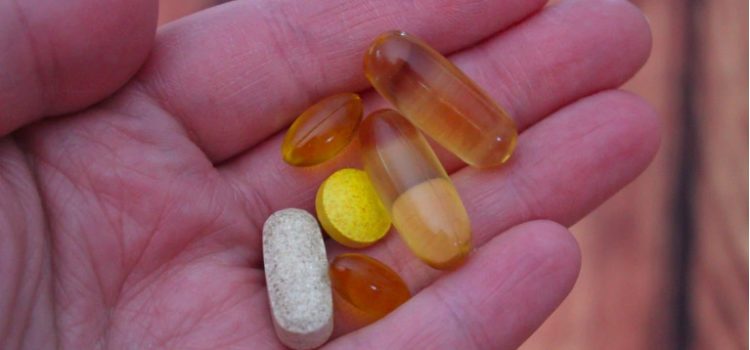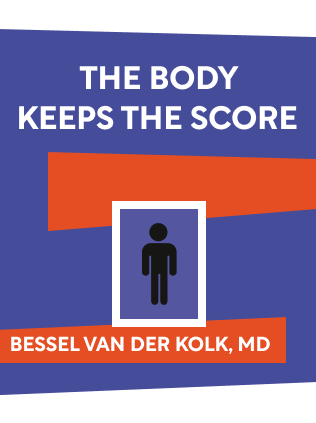

This article is an excerpt from the Shortform book guide to "The Body Keeps The Score" by Bessel van der Kolk. Shortform has the world's best summaries and analyses of books you should be reading.
Like this article? Sign up for a free trial here .
Are there drugs for PTSD? What medications are used to treat PTSD?
There are many drugs for PTSD. These drugs are based on the brain-disease model of PTSD, and all have different pros and cons.
Read more about drugs for PTSD and how they work in psychiatry.
Using Drugs for PTSD
Medications are widely used to treat symptoms of trauma, but can’t heal trauma without also incorporating other forms of treatment, such as therapy. On the plus side, drugs affect your brain chemistry in ways that can make it easier to control your emotions and behavior. On the other hand, drugs for PTSD can also dampen positive feelings and they don’t help you learn how to self-regulate.
Each family of drugs for PTSD has different pros and cons. So what medications are used to treat PTSD? Here’s a list:
Psychoactive drugs — including LSD and MDMA (ecstasy) — have been used to tame patients’ emotional reactions in this process. MDMA raises your self-awareness while decreasing fear, defensiveness, and numbing; this combination made it a great fit for trauma patients. Several studies using MDMA to aid in trauma sufferers’ psychotherapy had positive short- and long-term results, but it must be used carefully and in tandem with therapy.
Selective serotonin reuptake inhibitors (SSRIs) — including Prozac, Zoloft, Effexor, and Paxil — make patients feel calmer and less overwhelmed, making life seem more manageable. These effects can help patients engage in therapy, but they can also go too far and make patients feel that their emotions are being blunted.
Drugs that affect the ANS — such as propranolol and clonidine — block the effects of adrenaline, which fuels arousal and reactivity to stress, and helps reduces nightmares and insomnia. Since trauma survivors suffer from hyperarousal and high levels of stress hormones, this can help keep their rational brains engaged, rather than letting the emotional take over in response to trauma triggers; however, the author prefers patients use yoga and mindfulness to achieve these results.
Benzodiazepines — a type of tranquilizing drug that includes Klonopin, Valium, Ativan, and Xanax — calm you down and help quell worry, similar to alcohol. However, like alcohol, they also lower your inhibitions and may cause you to say things you wouldn’t say sober. Additionally, benzodiazepines are highly addictive, may impede patients’ ability to process their traumas, and can cause withdrawals that can worsen trauma symptoms.
Anticonvulsants and mood stabilizers — such as lithium and valproate — have some benefits, including easing hyperarousal. (Shortform note: The author doesn’t elaborate on the effects of this class of drug beyond this.)
Second-generation antipsychotic drugs — including Risperdal, Abilify, and Seroquel — block the dopamine system, which is responsible for arousal as well as motivation and rewards; while this can calm intense fear and anger, they also blunt your ability to feel pleasure. Furthermore, these drugs can cause weight gain, raise your risk of diabetes, and make you physically inert.
Drugs for PTSD Revolutionized How Mental Disorders Were Defined and Treated
Now that you know what medications are used to treat PTSD, it’s important to consider how drugs changed howe we look at PTSD. Throughout history, available technology has dictated the understanding and treatment of mental and emotional issues. Before the Enlightenment, mental illness and emotional issues were attributed to God, demons, sin, magic, and witchcraft. In the 19th Century, scientists began viewing behavior as a result of people’s adaptation to the complex world around them.
In the early 1950s, French scientists discovered a chemical compound that could make psychiatric patients less agitated and delusional. This compound was called Chlorpromazine, and was marketed under the brand name Thorazine. This introduced the brain-disease model of viewing mental problems as “disorders” that could be treated with drugs to adjust brain chemistry.
In 1968, study findings published in the American Journal of Psychiatry revealed that schizophrenic patients who were treated with drugs alone had better results than patients who participated in talk therapy three times a week. As a result, antipsychotic drugs were a huge factor in reducing the number of mental hospital inpatients in the U.S. from more than 500,000 in 1955 to less than 100,000 in 1996.
In the 1960s, scientists at the National Institutes of Health began isolating and measuring hormones and neurotransmitters — chemicals that transmit messages that allow us to interact with the world — in people’s blood and brain. Researchers saw that abnormal levels of a chemical called norepinephrine and dopamine were associated with depression and schizophrenia, respectively, which led them to conclude that they could create drugs for PTSD to treat those specific abnormalities.
Although that hope was never entirely realized, it led scientists to develop a system for publishing their findings — the Research Diagnostic Criteria — which ultimately led to the American Psychiatric Association’s Diagnostic and Statistical Manual of Mental Disorders (DSM).This publication was the first uniform system for psychiatric diagnoses, and remains the so-called bible of psychiatry.
Shortcomings of the Brain-Disease Model
The brain-disease model that pharmacology endorses ignores four fundamental truths.
- Reconnecting with people and communities is vital to healing.
- Communication gives patients the power to change themselves by talking about their experiences and finding common meaning with others.
- People have power over their physiology through activities such as breathing and moving.
- People can change their social conditions to create safe spaces where they can thrive.
Ignoring these truths means depriving people of the power to heal themselves and regain control over their minds, bodies, and experiences. Reliance on pharmacology makes people patients, at the hands of someone else’s power to heal them, instead of participants in their own healing process, which connects them with their sense of self.

———End of Preview———
Like what you just read? Read the rest of the world's best book summary and analysis of Bessel van der Kolk's "The Body Keeps The Score" at Shortform .
Here's what you'll find in our full The Body Keeps The Score summary :
- How your past trauma might change your brain and body
- What you can do to help your brain and body heal
- Why some trauma survivors can't recognize themselves in the mirror






